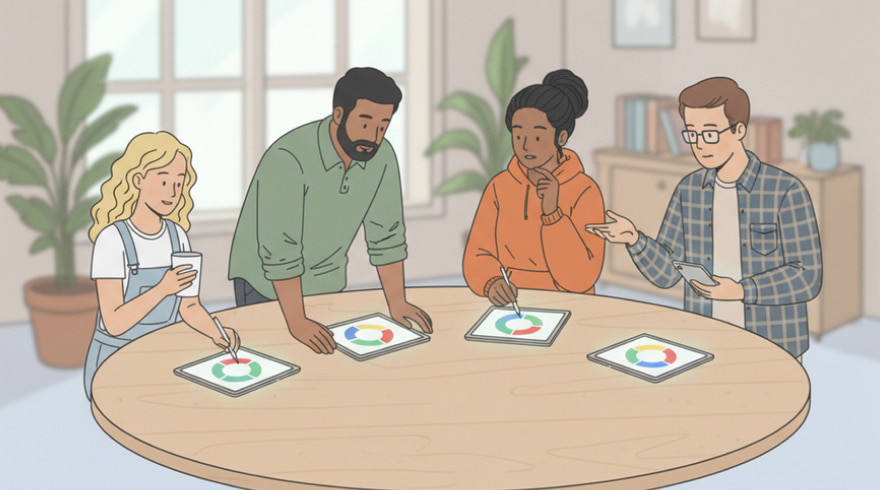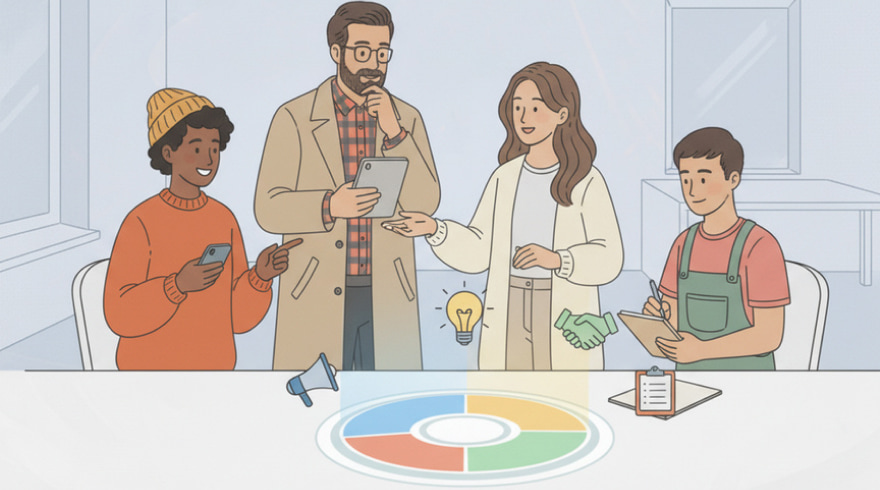DISC Personality Profile Testing: A Complete, SEO-Optimized Guide for Insightful Growth
- 28 October 2025

Understanding the DISC Model and Why It Endures
People communicate, decide, and collaborate in strikingly different ways, and the DISC framework distills those patterns into four approachable styles: Dominance, Influence, Steadiness, and Conscientiousness. Rather than labeling individuals, the model provides a language for preferences, helping teams decode how energy, pace, and priorities shape day-to-day behavior. This shared vocabulary lowers friction, accelerates trust-building, and clarifies how to flex your approach with different audiences. In practice, organizations use it to reduce miscommunication, elevate coaching conversations, and strengthen culture without adding process bloat.
Within many organizations, the gold-standard entry point is DISC personality profile testing, because the framework translates abstract tendencies into actionable insights that leaders, coaches, and contributors can use instantly. You can expect a focus on how you initiate tasks, influence others, respond to change, and handle rules, all expressed in plain, memorable terms. The output isn’t a rigid box; it’s a mirror that reflects your natural style and offers strategies for situational agility. When people understand these preferences, meetings become more productive, feedback lands with less defensiveness, and collaboration becomes a repeatable habit rather than a happy accident.
- Dominance: direct, results-first, decisive under pressure.
- Influence: persuasive, energetic, socially attuned.
- Steadiness: calm, reliable, cooperative under stress.
- Conscientiousness: precise, analytical, quality-focused.
How DISC Assessments Work and What They Measure
Most DISC instruments use forced-choice or ipsative questions that compare your preferences across the four styles rather than against a general population. This approach exposes your relative comfort zones and helps separate learned behaviors from innate tendencies. You’ll see graphs or narratives that indicate where you naturally lean, how you adapt in professional settings, and which contexts may sap your energy or create friction. The science is pragmatic and behavior-centric, not clinical, which is why it maps so well to communication and teamwork.
For newcomers, a well-constructed DISC profile test often includes situational prompts that reveal whether you speed up, slow down, take charge, persuade, support, or analyze when the stakes rise. Quality instruments cross-validate answers, watch for extreme patterns, and present strengths alongside potential blind spots. The best reports connect style to practical tactics how to write better emails, run clearer meetings, or make faster decisions without sacrificing accuracy. Because results describe preferences, not capabilities, the insights serve as a compass you can consult as contexts evolve.
- Expect 10–20 minutes of focused answering, with minimal prep.
- Reports typically include graphs, style narratives, and tips.
- Reliable tools explain both natural and adapted behavior.
Benefits, Use Cases, and Measurable Outcomes
When a common language reduces ambiguity, teams spend less time decoding intent and more time delivering impact. Leaders can assign tasks with sharper clarity, sales pros tailor messaging to buyer pace, and project managers orchestrate handoffs that respect each person’s working rhythm. HR partners lean on DISC to streamline onboarding and coach managers toward strengths-based delegation. Over time, organizations see fewer derailers in cross-functional initiatives because communication mismatches are addressed early instead of festering into conflict.
As programs scale, departments frequently pilot cohorts, and many start with DISC profile testing to establish a baseline of shared understanding before rolling into advanced workshops. Across implementations, participants report quicker consensus-building, higher meeting throughput, and improved feedback dynamics. In customer-facing roles, teams often see higher conversion rates and reduced churn due to better alignment with stakeholder expectations. For budget-sensitive exploration, some learners try a DISC profile test free option to sample the approach before investing in a robust, facilitator-led experience that includes coaching and application playbooks.
- Faster decisions through clearer role expectations.
- Higher engagement as people feel seen and understood.
- Reduced rework because collaboration norms are explicit.
Interpreting Results and Turning Insights Into Action
Reading a report is just the beginning; real returns arrive when you apply the insights to daily interactions. Start by identifying one strength to amplify and one friction point to soften, then pick two high-value situations to practice in perhaps a weekly sync and a stakeholder update. For example, a high-D teammate might slow down to confirm constraints, while a high-S colleague may voice concerns earlier to prevent late-stage surprises. With repetition, these micro-adjustments become second nature.
Leaders seeking standardization across departments often request a validated DISC personality profile test to align coaching language across cohorts and ensure consistency in development plans. For large rollouts or data-driven talent strategies, an enterprise-grade DISC profile assessment test can provide comparative analytics, heat maps, and team overlays that spotlight complementary strengths. Pair those outputs with enablement sessions, and you’ll transform static reports into living practices meeting agreements, feedback scripts, and escalation protocols that materially improve outcomes.
- Translate insights into clear “if-then” behaviors.
- Practice new habits in recurring, low-risk moments.
- Review progress monthly and iterate based on feedback.
Style Quick-Reference and Communication Strategies
To make the model easier to use, keep a concise crib sheet near your desk and review it before high-stakes conversations. A one-page view that links each style to do’s and don’ts saves time and primes you to flex in the moment. Aim to adjust tone, pace, and detail level rather than rewriting your personality; the goal is adaptability, not reinvention. If you want to experiment before committing to a paid option, some people start with a DISC profile free test to familiarize themselves with the style language, then upgrade for deeper interpretation and coaching.
| Style | Communicate By | Under Stress | Try This |
|---|---|---|---|
| Dominance | Be brief, bottom-line, and results-oriented | Impatience, pushing for speed over process | Ask one clarifying question before deciding |
| Influence | Use stories, enthusiasm, and collaborative tone | Over-optimism, reduced follow-through | Confirm owners, timelines, and next steps |
| Steadiness | Provide reassurance, context, and time to process | Risk aversion, reluctance to change | Pilot small changes with check-ins |
| Conscientiousness | Offer data, logic, and clear quality criteria | Over-analysis, perfectionism under pressure | Define “good enough” and decision thresholds |
Use the grid above as a pre-meeting checklist, and pair it with simple rituals: summarize desired outcomes, confirm responsibilities, and specify when decisions will be revisited. Over time, these habits compound into smoother execution and fewer misunderstandings.
Choosing the Right Instrument, Taking the Assessment, and Ethical Use
Selection should balance validity, clarity, and practicality. Look for clear documentation on the model, transparent scoring, and report examples that translate directly into on-the-job behaviors. If your goal is role-based nuance, consider industry-tailored versions with job-specific coaching tips, worksheets, and scenarios. Learning is faster when people can immediately see how insights apply to their pipeline reviews, service calls, or sprint ceremonies.
If you want role-relevant depth, a focused DISC profile personality test designed for sales, service, or leadership contexts can surface situational flex patterns you might otherwise miss. Remote-first organizations, meanwhile, sometimes widen access via a DISC profile test free online intake before commissioning verified, proctored versions for final development planning. Regardless of the path, apply assessments ethically: avoid using them as gatekeepers for hiring, seek consent, protect data, and ensure coaches are trained to interpret results responsibly.
- Request sample reports and technical summaries before buying.
- Provide enablement sessions so insights turn into behavior change.
- Establish data privacy and usage guidelines upfront.
Common Mistakes to Avoid and Best Practices to Adopt
One common error is treating style as destiny, which can harden stereotypes and reduce flexibility. Another is skipping the translation step from awareness to routines, leaving teams inspired but unchanged. To prevent those pitfalls, codify a few rituals agenda templates, feedback cadences, and decision-making norms that operationalize your insights in the moments that matter most. Progress compounds when small behaviors are repeated predictably.
In procurement, teams might be tempted by a DISC profile free test online, yet robust selection should weigh psychometrics, privacy, and post-assessment support before making a decision. Pair any instrument with coaching guardrails so DISCussions remain developmental and nonjudgmental. Rotate practice scenarios across functions, and showcase quick wins to build momentum. Finally, review outcomes quarterly, celebrate traction, and refine your playbook as the organization evolves.
- Use neutral language to prevent labeling and bias.
- Anchor insights to specific workflows and KPIs.
- Revisit agreements as teams or strategies change.
FAQ: Practical Answers About DISC and Getting Started
What exactly does a DISC assessment measure?
The instrument focuses on observable behavioral preferences across pace, priority, and problem-solving style, not aptitude or personality pathology. Results offer a lens for communication, conflict handling, and decision dynamics so teams can work together more fluidly and with less friction.
Are no-cost options worth trying?
Free versions can be useful for orientation, especially if you’re evaluating whether the model fits your learning culture. Many people sample free DISC profile tests to grasp the terminology before upgrading to validated tools with deeper guidance, coaching, and team overlays for sustained improvement.
How long does it take to complete and review?
Most assessments take under 20 minutes, and you can digest the report in another 20–30 minutes with a few pauses to reflect. For teams, add a short workshop to convert insights into meeting norms, feedback scripts, and decision protocols that stick.
Can we use DISC for hiring decisions?
It’s best treated as a development and communication tool, not a pass/fail screen. Some organizations review DISC profile tests alongside interviews and work samples to inform onboarding and coaching plans, avoiding any high-stakes filtering that could introduce bias.
How do I improve or flex my style over time?
Pick one behavior to practice in a recurring context, such as weekly planning or stakeholder updates, and track the before-and-after impact. Over several cycles, reinforce what works, retire what doesn’t, and add a new micro-skill so your adaptability grows steadily without overwhelming your routine.
Latest News
-
![Your Complete Guide to DISC: Improve Communication, and Thrive Together]() Your Complete Guide to DISC: Improve Communication, and Thrive Together What the DISC Framework Is and Why It Matters The DISC framework is a practical, behavior-focused model that helps people notice patterns in the way they communicate, make decisions, and respond to stress. Rather than boxing anyone in, it reveals tendencies you can flex based on the situation. Lead...
Your Complete Guide to DISC: Improve Communication, and Thrive Together What the DISC Framework Is and Why It Matters The DISC framework is a practical, behavior-focused model that helps people notice patterns in the way they communicate, make decisions, and respond to stress. Rather than boxing anyone in, it reveals tendencies you can flex based on the situation. Lead... - 29 October, 2025
-
![The Ultimate Guide to Measuring Communication Effectiveness]() The Ultimate Guide to Measuring Communication Effectiveness What Is a Modern Communication Evaluation? People interact in layered ways that blend clarity, tone, timing, and intent, and those dynamics can be hard to decode without structured observation. A modern diagnostic translates those subtle signals into observable indicators that are comparable across...
The Ultimate Guide to Measuring Communication Effectiveness What Is a Modern Communication Evaluation? People interact in layered ways that blend clarity, tone, timing, and intent, and those dynamics can be hard to decode without structured observation. A modern diagnostic translates those subtle signals into observable indicators that are comparable across... - 27 October, 2025
-
![Complete Guide to Free DISC Personality Insights]() Complete Guide to Free DISC Personality Insights Why a No‑Cost DISC Can Transform Self‑Awareness People are curious about what makes their decisions, reactions, and habits unique, and the DISC framework delivers a practical way to decode those patterns. By mapping behavior across four observable dimensions, Dominance, Influence, Steadiness, and C...
Complete Guide to Free DISC Personality Insights Why a No‑Cost DISC Can Transform Self‑Awareness People are curious about what makes their decisions, reactions, and habits unique, and the DISC framework delivers a practical way to decode those patterns. By mapping behavior across four observable dimensions, Dominance, Influence, Steadiness, and C... - 24 October, 2025



